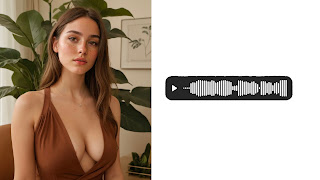Sent you a friend request, tap here to respond.
The Evolution of Fashion:
Weighing the Pros and Cons of Modern and Old Fashion.
Fashion has been an integral part of human culture for centuries, reflecting the values, attitudes, and aesthetics of each era.
From the corsets and top hats of the 19th century to the athleisure wear and statement accessories of today, fashion has undergone significant transformations.
This article explores the pros and cons of modern and old fashion, examining the impact of each on society, the environment,
and individual expression.
Modern Fashion ( Late 20th Century to Present)
Modern fashion is characterized by:
1. Diversity and inclusivity: Fashion now caters to a broader range of body types, ages, and cultures.
2. Fast fashion:
Affordable, trendy clothing is readily available, with new styles emerging every season.
3. Sustainability:
Eco-friendly and socially responsible fashion practices are gaining traction.
Pros of Modern Fashion:
1. Increased accessibility: Fashion is now more affordable and accessible to people from all walks of life.
2. Diverse representation: Modern fashion celebrates individuality and diversity, promoting body positivity and self-expression.
3. Innovative designs: Modern fashion is characterised by bold, innovative designs that push boundaries and challenge traditional norms.
Cons of Modern Fashion:
1. Fast fashion's environmental impact: The rapid production and disposal of cheap clothing contribute to pollution, waste, and climate change.
2. Unrealistic beauty standards: Social media platforms perpetuate unrealistic beauty standards, promoting unattainable beauty ideals.
3. Homogenous of styles: The dominance of fast fashion can lead to a homogenisation of styles, stifling individual creativity.
Old Fashion (Pre- Late 20th Century)
Old fashion refers to the styles and aesthetics of past eras, including:
1. Traditional craftsmanship: Clothing was often handmade or tailored, emphasizing quality and attention to detail.
2. Formal attire: Formal wear was a staple of old fashion, with intricate designs, luxurious fabrics, and precise tailoring.
3. Social hierarchy: Fashion reflected social status, with certain styles and fabrics reserved for the wealthy and aristocratic.
Pros of Old Fashion:
1. Timeless elegance: Old fashion exudes a sense of timeless elegance, with classic designs that transcend fleeting trends.
2. Quality and craftsmanship: Traditional craftsmanship ensured that clothing was well-made, durable, and long-lasting.
3. Cultural significance: Old fashion often carried cultural significance, reflecting the traditions, values, and history of a particular era or community.
Cons of Old Fashion:
1. Restrictive and exclusive: Old fashion was often restrictive, with certain styles and fabrics reserved for specific social classes or genders.
2. Limited accessibility: Old fashion was frequently inaccessible to those who couldn't afford expensive, handmade clothing.
3. Conformity: Old fashion often emphasised conformity to traditional norms, stifling individual creativity and self-expression.
Conclusion
Fashion has evolved significantly over the centuries, reflecting changing societal values, technological advancements, and cultural exchange. While modern fashion offers increased accessibility, diversity, and innovation, it also raises concerns about sustainability, exploitation, and unrealistic beauty standards. Old fashion, on the other hand, exudes timeless elegance, quality, and cultural significance, but was often restrictive, exclusive, and impractical. Ultimately, the ideal fashion approach likely lies in a balance between modern and old, combining the benefits of each to create a more inclusive, sustainable, and expressive fashion landscape.
References:
1. Fashion Theory: An Introduction by Valerie Steele (2022)
2. The Fashion Industry by Sandy Shultz (2022)
3. Sustainable Fashion: Why Now? by Jennifer Farley Gordon and Colleen Hill (2022)
4. The Culture of Fashion by Christopher Breward (2022)
5. Fashion and Sustainability: Design for Change by Jennifer Farley Gordon and Colleen Hill (2022)




Sorry, no message
ReplyDelete